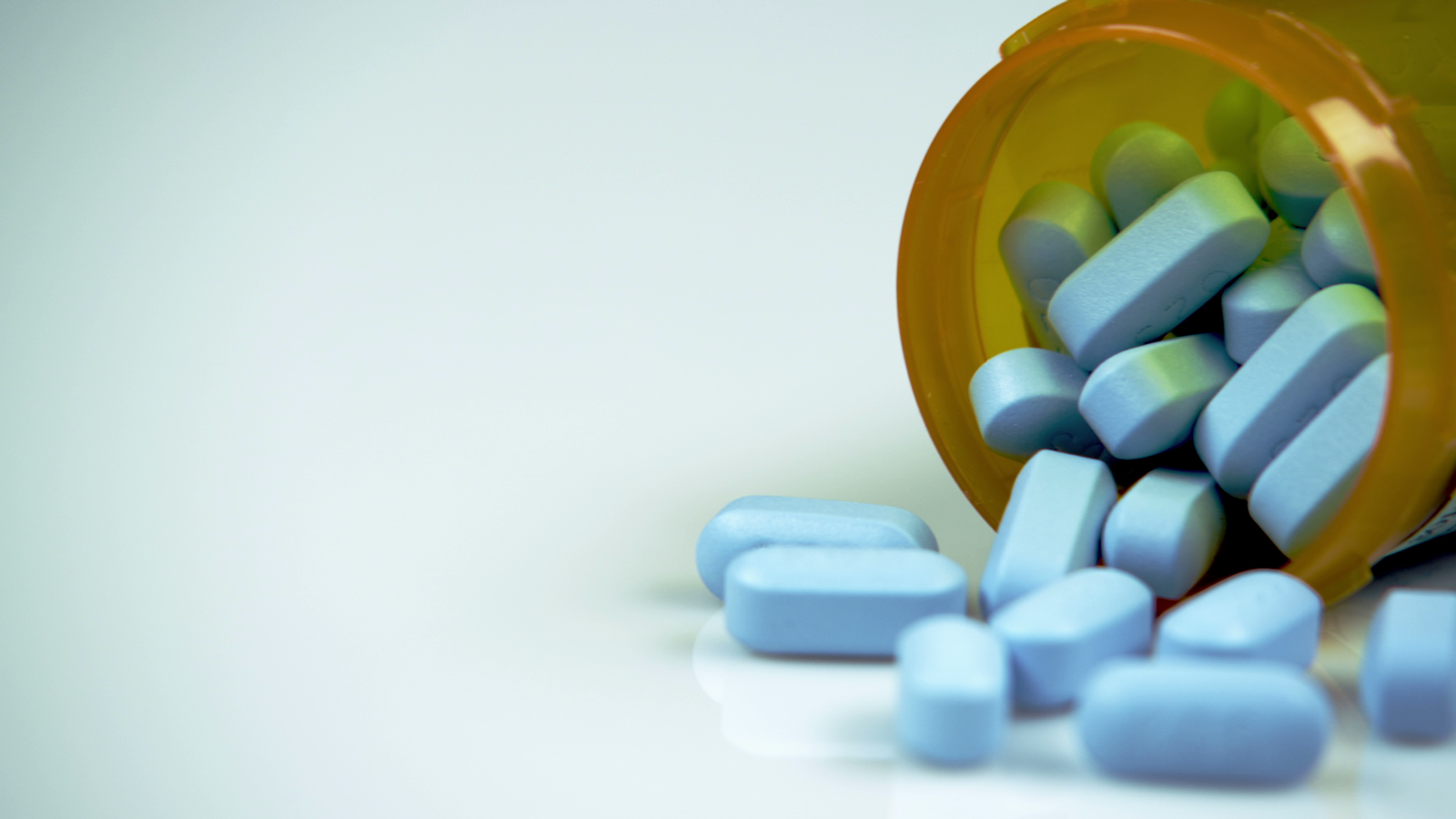- HIV pre-exposure prophylaxis (PrEP) is highly effective at preventing the transmission of HIV
- In an Ottawa study, healthcare providers offered PrEP to over 1,900 people at high risk for HIV
- Over five years, new HIV infections fell by 37% overall and by 57% in gay and bisexual men
In Canada today, PrEP consists of a pill containing two anti-HIV medicines. There are two formulations of these pills approved for use as PrEP and people take one of the following:
- Truvada (and in generic formulations) – tenofovir DF + FTC (emtricitabine)
- Descovy – tenofovir alafenamide (TAF) + FTC
When used as directed, both of these PrEP formulations are highly effective at reducing the risk of HIV infection. People who are considering PrEP first undergo HIV screening and can initiate PrEP if they test negative. Once people are on PrEP, HIV screening occurs at regular intervals, as does screening for other sexually transmitted infections (STIs), including chlamydia, gonorrhea and syphilis. Part of being on PrEP thus includes regular visits to a clinic for checkups and prescription renewals as well as laboratory visits.
You can find out more about PrEP here.
A study in Ottawa
A team of researchers in Ottawa collected and analysed information from public health and pharmacy databases to understand the impact of deploying PrEP in that city. The researchers restricted their analysis largely to the years 2017 to 2021. During this time, Canadian guidelines for the use of PrEP became available. Also, the researchers stated that as a public health initiative nurses in Ottawa offered PrEP to anyone “diagnosed with infectious syphilis, or rectal gonorrhea or chlamydia, or who, based on clinical assessment, was determined to be at risk of HIV infection.”
Researchers found that 1,901 people fulfilled these criteria and were offered a referral to a PrEP-prescribing clinic. Nearly 50% of these people (845) accepted the offer of PrEP. Of these 845 people, 97% were male and 95% were gay, bisexual or other men who have sex with men (gbMSM).
Rates of HIV fall significantly
Researchers found that new cases of HIV in Ottawa fell after PrEP was introduced in the city. HIV diagnoses were as follows:
- 2017 – 41 new cases
- 2018 – 34 new cases
- 2019 – 26 new cases
- 2020 – 27 new cases
- 2021 – 26 new cases
Readers can see that new diagnoses of HIV were highest in the first year of the study and then fell and stabilized in the latter years of the study.
The researchers stated that, overall, a 37% decrease in new HIV diagnoses occurred by the end of the study.
Focus on gbMSM
Further analysis revealed that the reduction of HIV infections was only significant among men, and in particular, among gbMSM.
The researchers stated that new cases of HIV were distributed among gbMSM as follows:
- 2017 – 19 cases
- 2018 – 16 cases
- 2019–2021 – 5 to 8 cases per year
The researchers stated that new HIV infections fell in gbMSM by 57% by the end of the study.
The researchers stated that the rate of new HIV infections did not decrease in the following populations:
- heterosexual people
- people who injected drugs
- women
- Black people
However, the researchers concluded “That we did not see a decrease among women or persons who use intravenous drugs, groups where PrEP uptake has been low in Ottawa and among whom PrEP was not as well targeted as part of PrEP-RN, supports the link between an increase in PrEP use and a decrease in the number of first-time HIV diagnoses.”
The potential impact of COVID-19
During the height of COVID-19, it is possible, likely even, that some people had reduced contact with sex partners and missed some visits to clinics and labs. As a result, it is possible that during that period rates of new cases of HIV could have decreased for reasons other than the use of PrEP and that fewer HIV tests may have been done.
However, researchers found that positive HIV test results declined only in men, and in particular, only in gbMSM. Furthermore, the researchers stated that the decrease in positive HIV test results occurred prior to the onset of the COVID-19 pandemic. Also, preliminary data from the year 2022 suggest that new cases of HIV continued to fall only among gbMSM. There was no significant decrease in positive HIV test results in women or people who inject drugs.
The researchers stated: “Had decreased access to testing [because of COVID-19] caused the decrease in diagnoses, one would predict a broader decrease in HIV incidence including in other demographic groups.”
Bear in mind
The current study is not definitive. However, PrEP has already been proven to be highly effective in randomized clinical trials and demonstration projects in other high-income countries. However, the Ottawa analysis is useful in that it suggests that deploying PrEP in a Canadian city can help significantly drive down new cases of HIV infection over time.
The researchers stated that “concerted efforts are now required” to understand what factors can alert doctors, nurses and pharmacists to the need for PrEP in other populations (such as women, Black people, Indigenous people, people who inject drugs). Understanding risk factors specific to these populations could help further decrease rates of new HIV infections.
—Sean R. Hosein
Resources
Pre-exposure prophylaxis – CATIE
Some views on injectable long-acting HIV pre-exposure prophylaxis (PrEP) – CATIE
Researchers explore issues related to sexual health among women who are sex workers – CATIE
A large study of HIV pre-exposure prophylaxis finds no new cases of HIV with daily dosing – CATIE
REFERENCE:
Kroch A, O’Byrne P, Orser L, et al. Increased PrEP uptake and PrEP-RN coincide with decreased HIV diagnoses in men who have sex with men in Ottawa, Canada. Canada Communicable Disease Report. 2023 June; 49(6):274-81.

